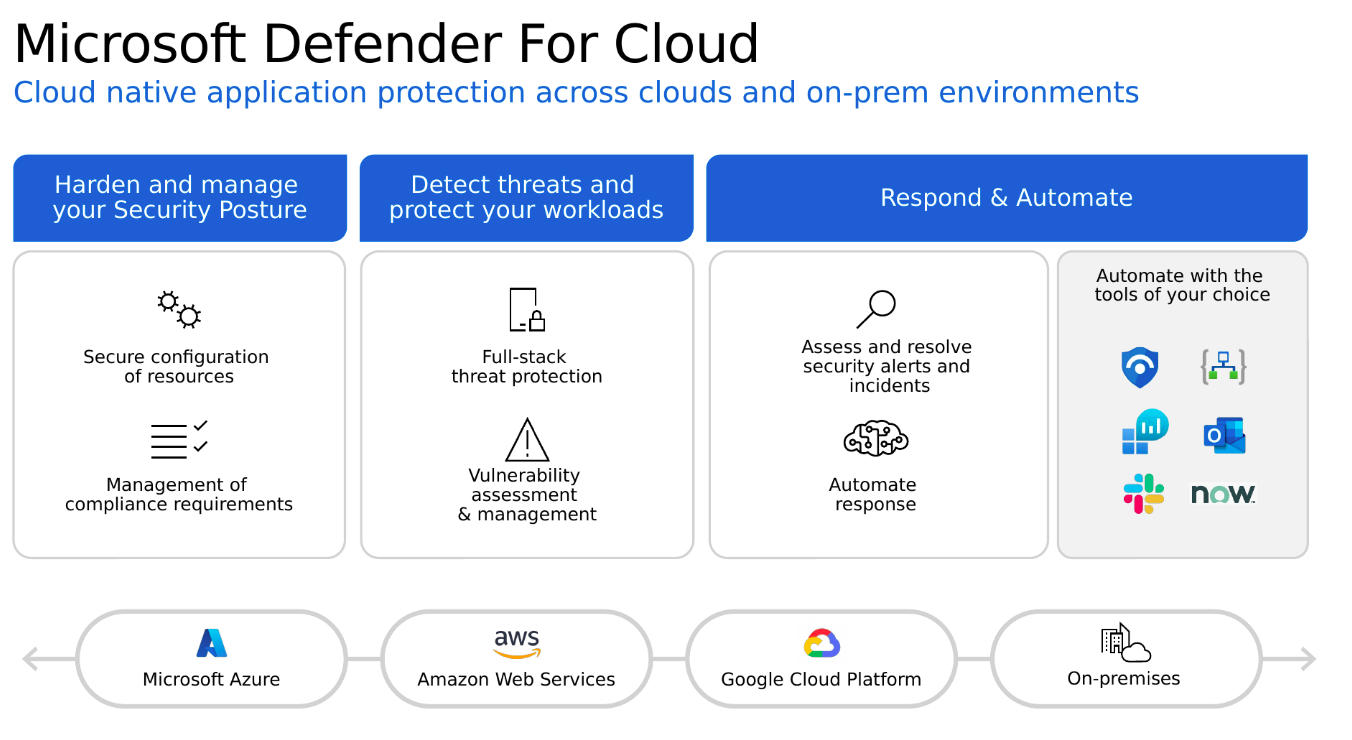Introduction
Ensuring your online business maintains the highest level security posture is paramount to ensure it's protected from cybersecurity threats. To be successful, businesses are becoming reliant on multicloud environments to handle the day to day operations of their basic system's infrastructure and information. Businesses need to be alerted about potential and actual cyber-attacks as soon as they occur. With this knowledge, they'll have the best possible chance to protect themselves and prevent future attacks.

Suppose you work for Contoso, an online clothing retailer that is developing a new e-commerce website to sell its clothes. Contoso's new website is made up of several parts, which are hosted in a multicloud environment that consists of Microsoft's Azure, Amazon Web Services (AWS) or Google Cloud Platform (GCP). There are backend Linux servers that are used to run the website's application. The website also requires SQL databases to store data.
Contoso's website needs to ensure that its servers and data are secure. Defender for Cloud offers various plans that ensure the proper defensive measures are in place for multicloud environments. For example, to protect the company's website, Constoso would want to enable Defender for Cloud with both the Defender for Servers plan and the Defender for SQL plans enabled.
Some of the protections that are provided include:
| Type of protections | Benefits |
|---|---|
Built-in with Azure 
|
- No deployment needed, just enable. - Built into the resource provisioning process. - Broadest protection coverage. - Ability to remediate with a click. |
Multicloud and hybrid support 
|
- Agentless onboarding for AWS and GCP posture management. - Auto provisioning for new resources. - Onboard on-premises resources with Azure Arc. |
Secure Score 
|
- Birds-eye view of the security posture of all of your cloud environments. - Prioritized security recommendations. - Track and manage your security posture state over time. |
Advanced threat protection 
|
- Workload specific signals and threat alerts. - Deterministic, AI, and anomaly based detection mechanisms. - Use the power of Microsoft Threat Intelligence with 24 trillion signals daily. |
By the end of this module you'll have a better understanding of Defender for Cloud and how it can protect your multicloud environments. You can use this knowledge to determine whether Defender for Cloud is the right choice to protect your multicloud environment from cybersecurity threats.
Learning objectives
In this module, you'll:
- Evaluate whether Defender for Cloud is appropriate to protect your hybrid cloud infrastructure.
- Learn how Defender for Cloud uses Cloud Security Posture Management (CSPM) and Cloud Workload Protection (CWP) to secure your hybrid cloud infrastructure.
Prerequisites
- Experience with using the Azure at the beginner level.
- Knowledge of cloud security at the beginner level.